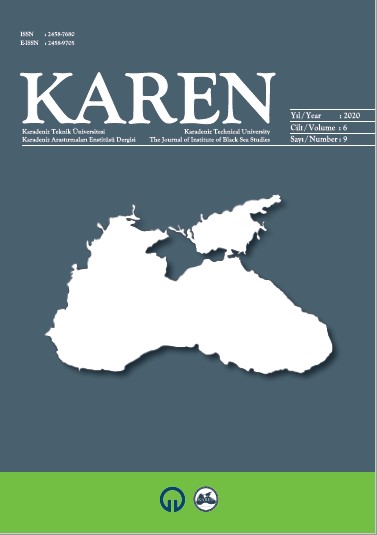IMPACTS OF SOCIO-ECONOMIC FACTORS ON CARBON DYNAMICS IN BLACK SEA FORESTS: A CASE STUDY FROM AKÇAABAT FOREST PLANNING UNIT
IMPACTS OF SOCIO-ECONOMIC FACTORS ON CARBON DYNAMICS IN BLACK SEA FORESTS: A CASE STUDY FROM AKÇAABAT FOREST PLANNING UNIT
Author(s): Derya MUMCU KÜÇÜKERSubject(s): Energy and Environmental Studies, Physical Geopgraphy, Environmental and Energy policy, Human Ecology, Environmental interactions, Socio-Economic Research
Published by: Karadeniz Teknik Üniversitesi - Karadeniz Araştırmaları Enstitüsü
Keywords: Land-Use/Land Cover Change; Socio-Economic Factors; Forest Crimes; Climate change; Non-cadastral Woodland (KDA);
Summary/Abstract: Forest ecosystems play a crucial role in mitigating the negative impacts of global climate change as an essential carbon sink. Land use and land cover change, mainly deforestation, degradation, and afforestation, have significantly affected carbon (C) stock. This study analyzed the effects of land use and land cover changes on forest C dynamics and its spatial distribution based on demographic, socio-economic, and landscape structure in the Akçaabat forest planning unit. Moreover, forest C dynamics in aboveground, belowground, deadwood, litter, and soil were calculated separately based on forest inventory data in 1984, 2008, and 2018. While the total C stock increased by about 38.04% between 1984 and 2008, it increased only by about 4.64% between 1984 to 2018 due mainly to not including of non-state-owned areas covered with forest trees (about 4369.40 ha) in the forest management plans developed based on land cadastre in 2018. The most considerable contribution to the C pool was from the soil by about 73.39%, 72.32% and 61.60% in 1984, 2008 and 2018, respectively. Deciduous cover types, young and full covered forests, had the highest average C density with 442.61 Mg ha-1 49.65 Mg ha-1 and 144.47 Mg ha-1, respectively. Over three decades, the conversion from degraded, forest opening, and non-forest areas to productive forests as well as increasing the quality of forest structure characterized by increasing mixed forest, young or mature development stages, and full covered forests has contributed positively to the C stock. This increase in the quality of the forest can be explained by conversion abandoned agriculture areas to forested areas with migration, reduction of social pressure on forested areas based on decreasing forest crime, and increasing forest crime, and increasing aware awareness and increasing awareness and sensitivity to the environment based on economic development.
Journal: Karadeniz Araştırmaları Enstitüsü Dergisi
- Issue Year: 6/2020
- Issue No: 9
- Page Range: 121-140
- Page Count: 20
- Language: English

